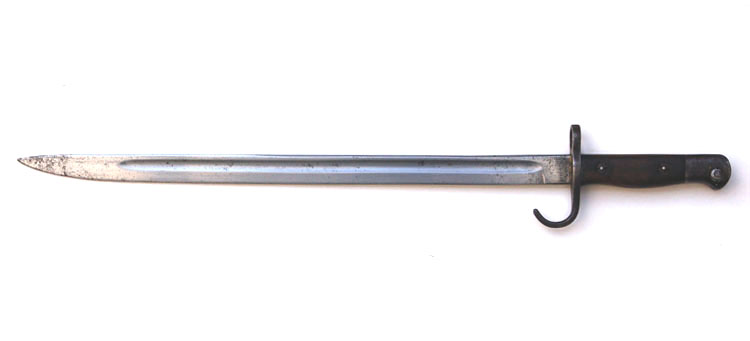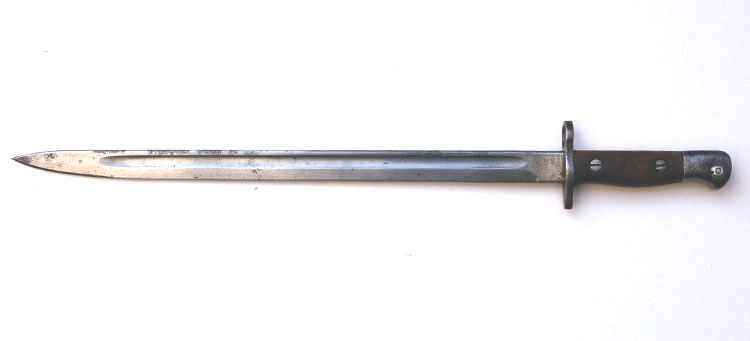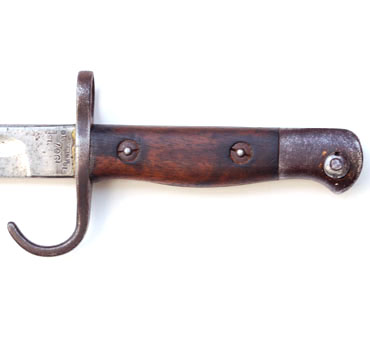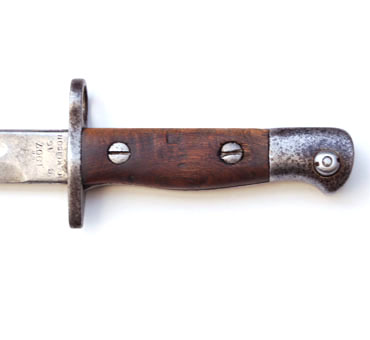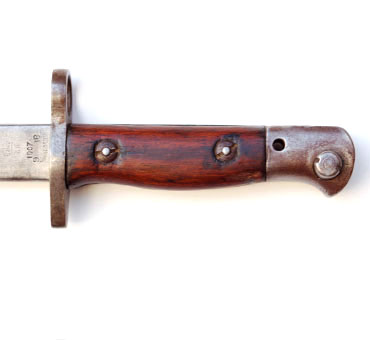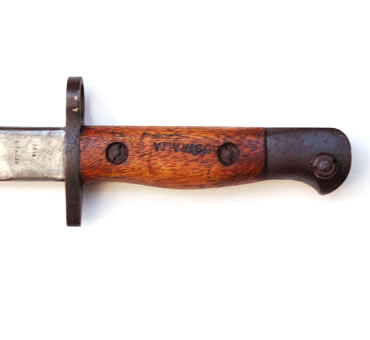
| P1907 "Lee Enfield"
Technical data : Total length : 554 mm Was used on : SMLE No. 1
General information : The British Army considered the bayonet attack as the ultimate proof of courage. Sometimes the soldiers weren’t even allowed to load their rifles because the commanders wanted to decide the battle with a bayonet charge.During the First World War this proved to be a very dangerous attitude, especially if the enemy was equipped with state-of-the-art machineguns. On the first day of the Battle of the Somme, 1st of July 1916, British losses exceeded 60000 men because soldiers were instructed to advance side-by-side towards the German lines. The German’s major concern was how to cool the barrels of their machineguns sufficiently in order to be able to continue shooting at the British soldiers. The P1907 is a so called sword-knife, too long to be a knife, too short to be called a sword. It was adopted by all the armies of the British Commonwealth Forces to be used on the Short Magazine Lee Enfield rifle (SMLE). Most of the Commonwealth countries had their own factories and therefore British, Canadian, Australian, South-African and Indian versions of the P1907 bayonet exist. The original design was based on the Japanese T30 bayonet and had a quillon, just like that Japanese counterpart. In 1914 the British realised that this quillon often got stuck in barbed wire and instructions were given to cut off the quillon on existing bayonets and manufacture new models without it. Another modification was the addition of a cleaning hole to the pommel. On British bayonets you can find many stamps, especially on the ricasso, the base of the blade, both on the left as the right side. The big “1907” stamped on the left side is related to the model and not to the year of manufacture. The month and year when the bayonet was made can be found just underneath that “1907”. April 1917 for example would be stamped as “4 17”. Other stamps that figure on most British bayonets are the “Broad Arrow” for acceptance by the British army and an “X” which indicates a positive result for the bend test. Known makers : J. Chapman Images.
© www.bajonet.be |
||||||||||||||||||||||||||||||
